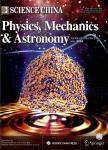Extended defects in hydrogen-implanted (111) silicon wafer treated by high temperature annealing process
Extended defects in hydrogen-implanted (111) silicon wafer treated by high temperature annealing process作者机构:General Research Institute for Non-ferrous Metals National Engineering Research Center for Semiconductor Materials Beijing 100088 China General Research Institute for Non-ferrous Metals National Engineering Research Center for Semiconductor Materials Beijing 100088 China
出 版 物:《Science China(Physics,Mechanics & Astronomy)》 (中国科学:物理学、力学、天文学(英文版))
年 卷 期:2004年第47卷第6期
页 面:658-663页
核心收录:
学科分类:07[理学] 08[工学] 0805[工学-材料科学与工程(可授工学、理学学位)] 0704[理学-天文学]
基 金:the GRINM's Innovation Funds(C-00-3-6601)
主 题:silicon, hydrogen, high temperature annealing, extended defects.
摘 要:High resolution transmission electron microscopy (HRTEM) has been used to investigate the extended defects induced by the interaction between hydrogen and silicon during the high temperature annealing process in the hydrogen-implanted (111) silicon wafer. It has been found that the high temperature annealing process, like the low temperature annealing process, leads to the formation of cracks. However, beneath the cracks induced by high temperature annealing, there appear many additional dislocations. Some amorphous bands have also been observed. In addition, a string of cavities, which are truncated octahedral in shape and surrounded by {111} and {100 } lattice planes, have been revealed. These cavities, some of which have amorphous inner walls, are arrayed parallel to the top surface. Between cavities, there normally appears a dislocation band.



